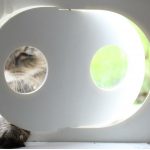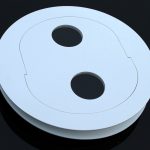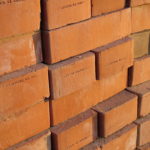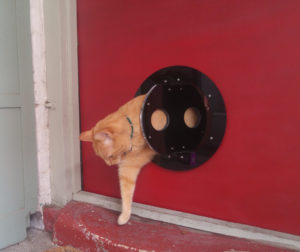Catflaps

The draughtproof Petflap
Catflaps – cat owners will know all about these. Do you prefer a prolonged rattle and bang every time your cat goes through the catflap together with a draught round the ankles, or getting up every five minutes to open the door for your cat?
These have traditionally been the options for cat owners whose cats go outside (which is the majority) but now the Petflap draughtproof pet door gives you a third option: carry on with what you’re doing as your pet comes and goes as it pleases through a quiet, gentle and draughtproof pet door.
Draughtproof
The Petflap works on the same principle as our Ecoflap letter box draught excluder. It’s cut fractionally larger on one face on each side, so that any draught blows it more firmly against its frame instead of allowing it to blow back and forth. This eliminates noise and prevents draughts from blowing in to your house. We haven’t come up with a solution for wet and muddy paws, but the Petflap (and the Ecoflap) keep out rain too.
Gentle
Many traditonal catflaps are spring loaded in order to shut properly, but this can lead to trapped tails (mentioned in this amusing article about cats and catflaps). The Petflap relies on physics to shut properly so doesn’t put any pressure on any part of the animal until the animal is completely through.
Top-hung catflaps tend to crash down on an animal, something cats particularly dislike, but the Petflap pivots vertically. The animal exits one side and enters the other (in our experience it takes them very little time to get the hang of that), taking their time, dignity completely intact.
Aesthetics
The catflap is a utilitarian item of homeware, but that doesn’t mean it needs to be ugly or a design-free zone. We’ve modifed the design of our Petflap to make it easier to fit into glass, but we’ve been keen at all times to maintain its good looks. So not only can your cat come and go quietly and safely, but your door can look stylish too.
Bespoke

The new round shape
When our final manufacturing ducks are lined up we plan to release and larger size, and we’ll be able to return to making bespoke Petflaps. We’ve had so many enquiries about spaniel-size Petflaps that we plan to create a door big enough for a Cocker. Our circular design allows us to create larger animal access areas within more reasonable size overall frames. Our previous rectangular design was getting too big for the average door when it was scaled up for a medium-size dog.
If you’d like to go on the list to be notified when we have stock, please email info@ecoflap.co.uk.







